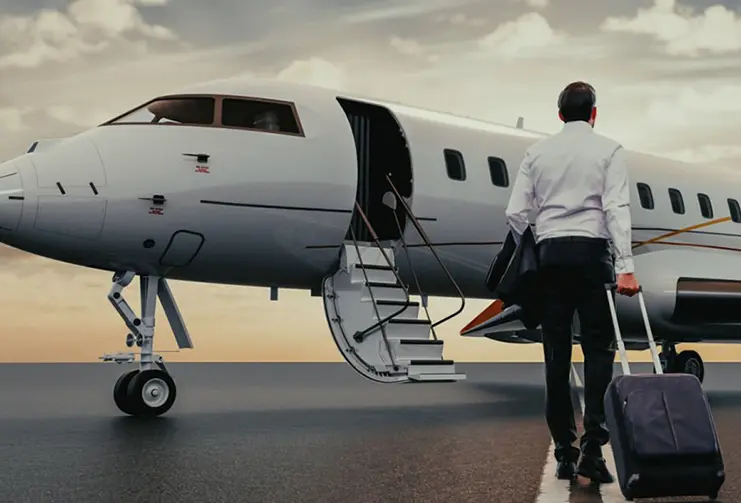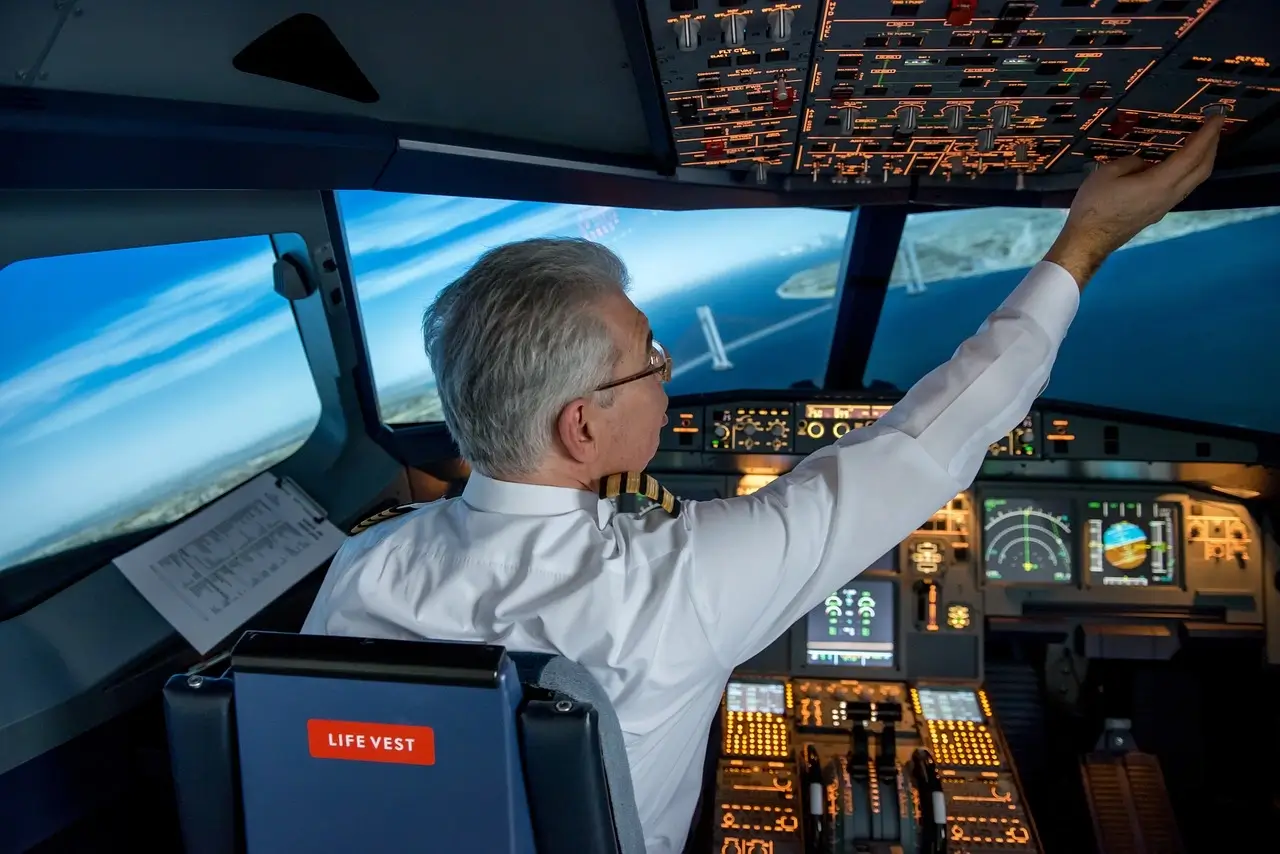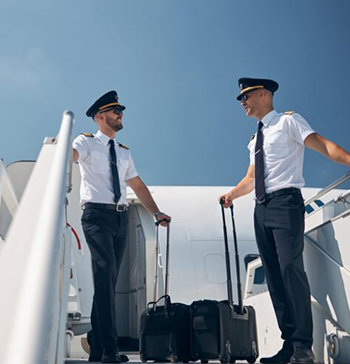
Commercial Pilot License (CPL)

Soar to Professional Heights: Your Guide to Obtaining a Commercial Pilot License (CPL) in the Philippines
The thrill of piloting a private aircraft is undeniable, but for those who yearn to push their boundaries and embark on a rewarding professional aviation career, the Commercial Pilot License (CPL) is the key. This coveted license unlocks a world of opportunities, allowing you to fly commercially for airlines, cargo companies, or even your own private venture.
Unlocking the Potential: What Does the CPL Offer?
The CPL empowers you to:
- Pilot multi-engine aircraft: Expand your capabilities beyond single-engine planes.
- Carry passengers for hire: Earn a living by flying passengers on commercial flights.
- Act as pilot-in-command (PIC): Take full responsibility for the aircraft and crew.
- Explore diverse career paths: From airlines to private charters, the possibilities are vast.
Charting Your Course: Embarking on CPL Training:
The journey to your CPL demands dedication and comprehensive training, encompassing:
- Advanced Ground School: Delve deeper into complex aeronautical subjects, including instrument flight procedures, airline operations, and commercial regulations.
- Multi-engine Flight Training: Master the intricacies of multi-engine aircraft under the guidance of experienced instructors.
- Instrument Rating Training: Learn to navigate using instruments in challenging weather conditions, expanding your operational capabilities.
- Examinations: Showcase your acquired knowledge and proficiency through written, oral, and practical assessments conducted by the Civil Aviation Authority of the Philippines (CAAP).
Taking the First Step: Prerequisite Checks:
Before embarking on this exciting adventure, ensure you fulfill these essential criteria:
- Hold a valid Private Pilot License (PPL): This serves as the foundation for your CPL training.
- Age: Be at least 18 years old.
- Medical Fitness: Maintain a valid Class 1 Medical Certificate from a CAAP-approved Aviation Medical Examiner.
- English Proficiency: Demonstrate strong English communication skills, crucial for professional aviation operations.
Demystifying the Journey: Exploring the CAAP Flight Training Syllabus:
The CAAP outlines a structured syllabus for CPL training, ensuring consistent skill development:
- Advanced Ground School: Covers subjects like multi-engine aircraft systems, instrument flight procedures, airline operations, and commercial regulations.
- Multi-engine Flight Training: Includes a minimum of 15 hours of flight time in multi-engine aircraft, with specific requirements for instrument training and cross-country navigation.
Breaking Down the Stages:
Your training typically unfolds in these phases:
- Instrument Rating Training: Master instrument flight procedures in preparation for challenging weather situations.
- Commercial Pilot Ground School: Deepen your theoretical understanding of commercial aviation operations and regulations.
- Multi-engine Flight Training: Hone your skills in handling multi-engine aircraft under the guidance of experienced instructors.
- Practical Test: Showcase your acquired knowledge and skills to a CAAP-designated examiner.
- License Issuance: Upon successful completion of all requirements, proudly receive your CPL!
Investing in Your Future: Understanding the Costs:
The exact cost of obtaining your CPL varies depending on several factors:
- Flight School: Different schools offer diverse program structures and pricing models.
- Location: Training costs may differ based on the school’s geographical location.
- Aircraft Availability: Hourly rental rates for multi-engine aircraft impact the overall cost.
- Instructor Rates: Consider the instructor’s experience and hourly charges.
Do I Need to Pay Upfront?
Most flight schools offer flexible payment options, allowing you to spread the cost throughout your training. Explore installment plans, scholarships, and potential financial aid to make your dream achievable.
Time Commitment: How Long Will It Take?
The duration of your CPL training depends on your dedication, available time, and learning pace. On average, expect a minimum of 12-18 months, with dedicated individuals potentially completing it within a year.
Estimating the Investment:
While exact costs fluctuate, consider this range for budgeting:
- Instrument Rating Training: ₱50,000 – ₱80,000
- Commercial Pilot Ground School: ₱1,700,000 – ₱1,800,000
- Multi-engine Flight Training: ₱200,000 – ₱300,000 (including aircraft rental and instructor fees)
- Examinations and Other Fees: ₱15,000 – ₱25,000
CAAP Requirements for Your CPL:
Remember, obtaining your CPL involves adhering to specific CAAP regulations:
- Maintain a valid Class 1 Medical Certificate.
- Meticulously document your flight training under instructor supervision.
- Meet the minimum flight time requirements: This includes total flight time, multi-engine flight time, instrument flight time, and cross-country navigation time as specified by CAAP regulations.
- Pass both the written and practical examinations conducted by CAAP-designated examiners.
- Demonstrate proficiency in English communication during all training and practical assessments.
Beyond the Basics: CPL Upgrades and Enhancements:
Your CPL paves the way for further specialization and career advancement:
- Type Rating: Train and qualify to fly specific aircraft models demanded by airlines or other commercial operators.
- Multi-crew Coordination (MCC): Develop teamwork and leadership skills crucial for operating as part of a multi-crew flight deck.
- Flight Instructor (FI) Rating: Share your passion and knowledge by training future generations of pilots.
Remember, the sky’s the limit! Obtaining your CPL is a significant milestone, opening doors to diverse and rewarding career paths in the aviation industry. Embrace the continuous learning journey, challenge yourself with further ratings, and explore the incredible opportunities this license unlocks.
Ready to Take Off?
If the thrill of soaring through the skies as a professional pilot ignites your passion, take the first step! Research reputable flight schools in the Philippines, compare their programs and costs, and schedule introductory flights to experience the magic firsthand. With dedication, passion, and the right guidance, you can transform your dream of becoming a commercial pilot into a fulfilling reality.
Additional Resources:
- Civil Aviation Authority of the Philippines (CAAP): https://caap.gov.ph/
- Aircraft Owners and Pilots Association (AOPA) Philippines: https://www.philstar.com/tags/aircraft-owners-and-pilots-association-philippines
- List of Accredited Flight Schools in the Philippines: https://caap.gov.ph/wp-content/uploads/2023/10/List-of-Pilot-Maintenance-Schools-As-of-Sept.-1-2023.pdf
Start your adventure today and let the boundless skies welcome you with open arms!

Frequently asked questions
Are commercial pilots in demand in the Philippines?
While the demand for commercial pilots can vary depending on economic conditions, airline expansion plans, and industry trends, commercial pilots are generally in demand in the Philippines. Philippines has a growing aviation industry with several domestic and international airlines operating in the region, creating opportunities for commercial pilots seeking employment. Additionally, Australia’s geographic location makes it an attractive destination for flight training schools and aviation-related businesses, further contributing to the demand for pilots. Aspiring commercial pilots should stay informed about market conditions, industry developments, and job opportunities in the Philippines by networking with industry professionals, attending aviation career fairs, and conducting thorough research on potential employers.
How much does it cost to get a commercial pilot license (CPL) in the Philippines?
The cost of obtaining a Commercial Pilot License (CPL) in the Philippines can vary depending on several factors such as the flight school chosen, the type of aircraft used for training, additional fees for exams, medical tests, and other requirements. Generally, the total cost can range from approximately $30,000 to $40,000 USD. This includes the expenses for flight training hours, ground school, instructor fees, examination fees, and administrative costs. It’s crucial for aspiring pilots to research and compare the costs at different flight schools to find the best option that fits their budget and training needs.
How long does it take to be a qualified commercial pilot in the Philippines?
The duration to become a qualified commercial pilot in the Philippines typically varies based on individual aptitude, training program structure, and weather conditions affecting flying opportunities. On average, it takes about 18 to 24 months to complete the necessary training and accumulate the required flight hours to qualify for a Commercial Pilot License (CPL). However, this timeframe can extend if there are any delays in training progress, weather disruptions, or personal circumstances affecting training consistency. It’s essential for aspiring pilots to commit to a disciplined training schedule and remain flexible to adapt to any unforeseen challenges during their training journey.
How long does it take to be a qualified commercial pilot?
The process to become a qualified commercial pilot involves several stages, including obtaining the necessary licenses and ratings, accumulating flight hours, completing training programs, and passing relevant examinations. While the specific requirements may vary depending on the aviation authority’s regulations and the type of aircraft one intends to fly, it generally takes around 18 to 24 months to become a qualified commercial pilot. This timeline includes completing Private Pilot License (PPL) training, Instrument Rating (IR) training, Commercial Pilot License (CPL) training, and accumulating the required flight hours to meet the minimum eligibility criteria for commercial pilot positions.
How much do commercial pilots earn?
The salary of commercial pilots can vary depending on several factors such as the type of aircraft flown, years of experience, employer, and location. In the Philippines, entry-level commercial pilots can expect to earn around $1,500 to $3,000 USD per month, while experienced pilots working for major airlines may earn significantly higher salaries ranging from $4,000 to $10,000 USD per month or more. Additionally, pilots may receive additional benefits such as allowances, bonuses, and retirement benefits. It’s important for aspiring commercial pilots to research the salary prospects in different sectors of the aviation industry and consider factors such as job stability, career progression opportunities, and lifestyle preferences when planning their career path.
What is a commercial pilot in the Philippines?
A commercial pilot in the Philippines is an individual who holds a Commercial Pilot License (CPL) issued by the Civil Aviation Authority of the Philippines (CAAP) and is authorized to operate aircraft for hire or reward. Commercial pilots may work for airlines, charter companies, cargo operators, flight training organizations, or other aviation-related businesses. They are responsible for safely operating aircraft, transporting passengers or cargo, adhering to aviation regulations and company procedures, and ensuring the comfort and safety of their passengers and crew. Commercial pilots undergo rigorous training and testing to acquire the necessary skills, knowledge, and experience to perform their duties competently and professionally.
Are commercial pilots in demand in Australia?
While the demand for commercial pilots can vary depending on economic conditions, airline expansion plans, and industry trends, commercial pilots are generally in demand in Australia. Australia has a growing aviation industry with several domestic and international airlines operating in the region, creating opportunities for commercial pilots seeking employment. Additionally, Australia’s geographic location makes it an attractive destination for flight training schools and aviation-related businesses, further contributing to the demand for pilots. Aspiring commercial pilots should stay informed about market conditions, industry developments, and job opportunities in Australia by networking with industry professionals, attending aviation career fairs, and conducting thorough research on potential employers.
Can a non-Philippines citizen become a commercial pilot?
Yes, non-Philippines citizens can become commercial pilots in the Philippines. The Civil Aviation Authority of the Philippines (CAAP) allows individuals from foreign countries to undergo pilot training and obtain pilot licenses in the Philippines, provided they meet the eligibility criteria and comply with the regulatory requirements set forth by the CAAP. Non-Philippines citizens interested in becoming commercial pilots in the Philippines may need to obtain the necessary visas or permits for training purposes, undergo medical examinations, pass English language proficiency tests, and meet the educational and training requirements specified by the CAAP. Additionally, they may need to provide proof of residency or establish a local presence in the Philippines during their training period. It’s essential for non-Philippines citizens to research and understand the specific regulations and procedures applicable to foreign pilots training in the Philippines before embarking on their pilot training journey.
Free Career Guide

Want to find out more about our pilot courses?
Download our free eBook to learn all about pilot training in the Philippines, including the qualifications needed, the training process, available courses, and career opportunities. Find out how you can take the first step toward a rewarding career in aviation.






